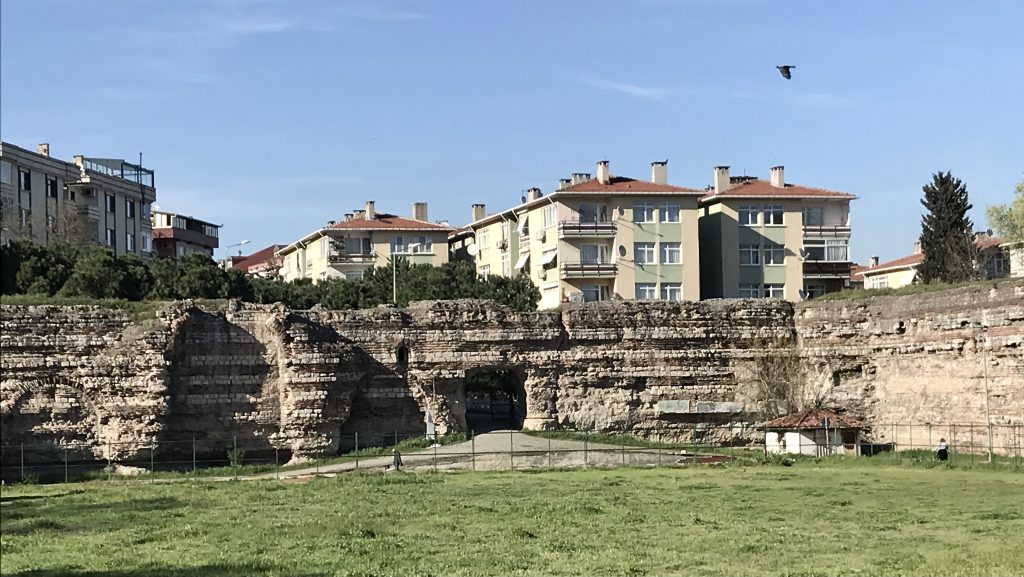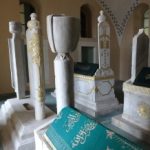“Copper Village”
Old names: Hebdomon, Makrohori, Makriköy
Market: Saturday
It used to be the case that as you sped into İstanbul from Atatürk Airport you were whisked through the outskirts of Bakırköy. Now that the airport has been moved elsewhere, however, Bakırköy has become just another very built-up modern suburb on the outskirts of the historic centre that might not, on the surface, appear to have much to offer visitors. Historically, though, this was once Hebdomon (“Seventh”), a hugely important point on the Via Egnatia, 7 miles/11km from the Milyon, the stone on the edge of Sultanahmet Square from which distances were measured in the Roman Empire.

Backstory
The Hebdomon appears to have served both as a kampos (military base) and a semi-residential base for the early Byzantine emperors, many of whom were proclaimed emperor here until 474 when the ceremony was relocated to Hagia Sophia (now Ayasofya Cami). There appear to have been two “palaces” here, one, the Lucundianae, probably built in the 4th century, where the emperors could stay, the other, the Magnaura, probably more ceremonial. The lost column of Theodosius II probably marked the start of a processional route that would be followed all the way to what is now Sultanahmet Square (slight traces of the plinth survive in the grounds of Ayasofya but are currently inaccessible to visitors). The kampos itself is now occupied by the Veli Efendi Hippodrome. Of the harbour here that probably facilitated Arab and Bulgur attacks on the city there are no longer any traces.
Theodosius I had a church to St John Prodromos built here in 391 to house the head of the Baptist although its remains have since been lost. Ditto with the church of St John the Evangelist where Basil II (‘the Bulgur-Slayer”) preferred to be buried instead of in the Holy Apostles in the town centre. Gone too are the limestone quarries that once supplied building stone for the city walls.
Around Bakırköy
The one thing still to survive from the Byzantine era is the oddity called the Fildamı (Elephant Reservoir), a large opn-air reservoir surrounded by curvy brick-and-stone walls that was probably built in the 5th century to supply the palace although it may also have been connected to other reservoirs, cisterns and aqueducts that still survive inside the Land Walls.
If you decide to take a look at the Fildamı you might also want to visit the nearby Veliefendi Hippodrome, Turkey’s oldest race course where the Gazi Derby, named in honour of Atatürk is held every year on 28 June. The stadium was largely financed by the British army officer, Sir Loftus Bates (1863-1951), and the buildings were designed by Vedat Tek in 1922. It acquired its name because it was developed on what had been farmland belonging to the Şeyulislam, Veliyüddin Efendi in the 18th century but it stands on what is believed to have been the Kampos or military training ground in Byzantine times.
Otherwise, today’s Bakırköy is mainly a residential and shopping area with just a smattering of 19th-century buildings dotted about, including Greek and Armenian churches and schoolhouses. One building to look out for is the Taş Okul which started life as the Kont Amadee Alleon Köskü, the summer house of a French banker and town planner who imported the bricks and tiles to build it from Marseilles. Later it became the Taş Mektep (Stone Primary School) before being severely damaged in an earthquake. It has now been restored to serve as a primary school once again. The count himself moved into a second house, known as the Aslanlı Köşk (House with Lions, Kont Alyon Evi) from the carvings on its exterior.
 Restaurant of Sheraton HotelSleeping
Restaurant of Sheraton HotelSleeping
Technically speaking the waterside at Bakırköy is actually part of Ataköy. No matter – it is home to a couple of fine hotels.
Ataköy Marina Hotel. Tel: 0212-560 4110
Sheraton Ataköy. Tel: 0212-560 8100
Trasnport info
Although there is a Metro station in Bakırköy it is not near the main shopping area which is served by the Marmaray station. The Fildamı and Veliefendi Hippodrome are closer to the Yenimahalle station on the Marmaray.
Nearby areas



